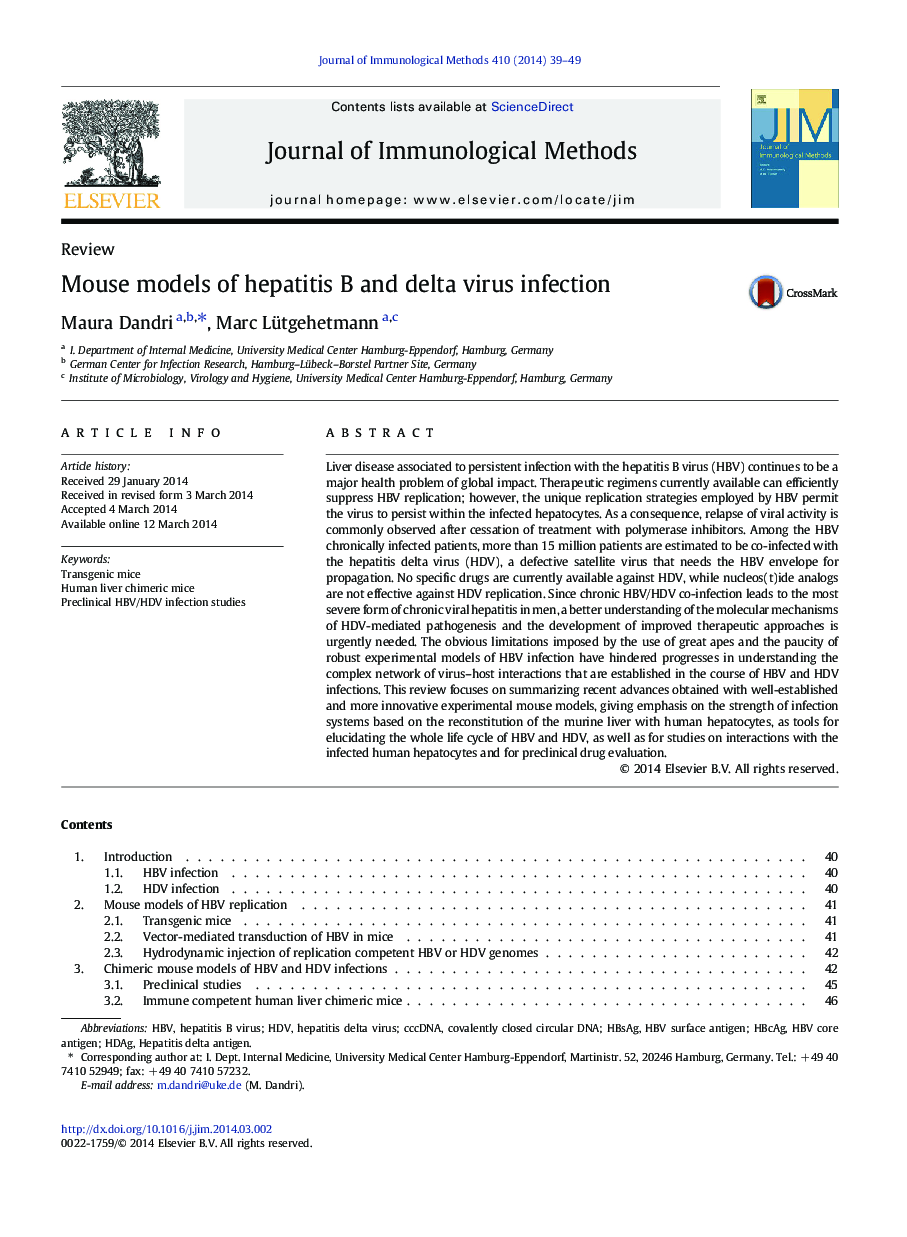| کد مقاله | کد نشریه | سال انتشار | مقاله انگلیسی | نسخه تمام متن |
|---|---|---|---|---|
| 2088143 | 1545699 | 2014 | 11 صفحه PDF | دانلود رایگان |

• Host restraints have limited research advances in HBV and HDV biology.
• Murine hepatocytes are not permissive for HBV and HDV infections.
• Transgene/vector-driven expression of viral genomes allows viral replication in mice.
• Mouse models of viral replication permitting antiviral drug evaluation are presented.
• Mice with human livers allow studies on viral entry, cccDNA & virus–host interactions.
Liver disease associated to persistent infection with the hepatitis B virus (HBV) continues to be a major health problem of global impact. Therapeutic regimens currently available can efficiently suppress HBV replication; however, the unique replication strategies employed by HBV permit the virus to persist within the infected hepatocytes. As a consequence, relapse of viral activity is commonly observed after cessation of treatment with polymerase inhibitors. Among the HBV chronically infected patients, more than 15 million patients are estimated to be co-infected with the hepatitis delta virus (HDV), a defective satellite virus that needs the HBV envelope for propagation. No specific drugs are currently available against HDV, while nucleos(t)ide analogs are not effective against HDV replication. Since chronic HBV/HDV co-infection leads to the most severe form of chronic viral hepatitis in men, a better understanding of the molecular mechanisms of HDV-mediated pathogenesis and the development of improved therapeutic approaches is urgently needed. The obvious limitations imposed by the use of great apes and the paucity of robust experimental models of HBV infection have hindered progresses in understanding the complex network of virus–host interactions that are established in the course of HBV and HDV infections. This review focuses on summarizing recent advances obtained with well-established and more innovative experimental mouse models, giving emphasis on the strength of infection systems based on the reconstitution of the murine liver with human hepatocytes, as tools for elucidating the whole life cycle of HBV and HDV, as well as for studies on interactions with the infected human hepatocytes and for preclinical drug evaluation.
Journal: Journal of Immunological Methods - Volume 410, August 2014, Pages 39–49